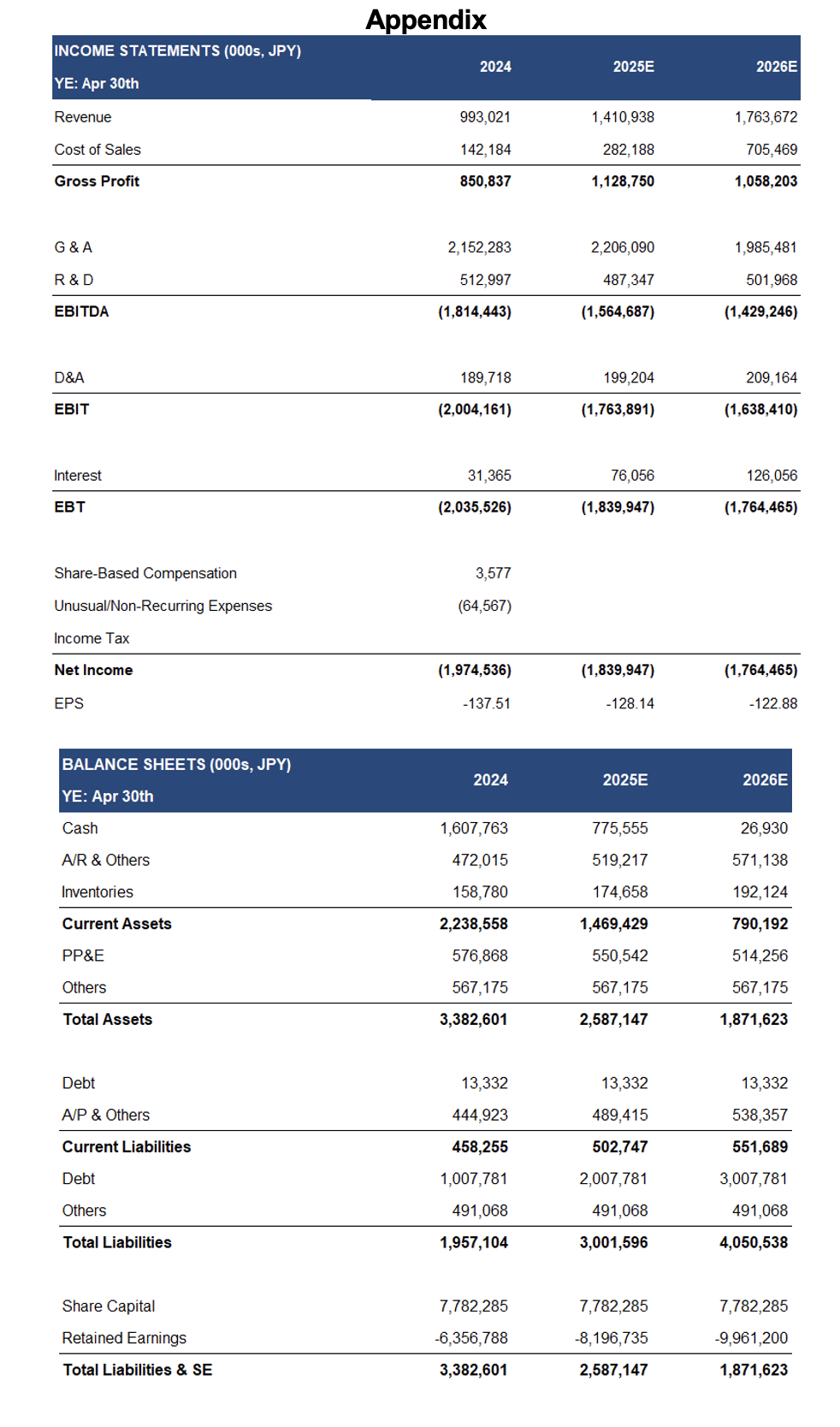- Pixie has six commercialized products (all launched in the past two years), and several others in R&D stages. One of its flagship products promotes hair growth and mitigates hair loss (SonoRepro). The company also offers products to individuals who are deaf or hard of hearing (VUEVO), and those interested in improving their cognitive abilities (kikippa).
- In August 2024, the company launched the VUEVO Display, a transparent screen that shows real-time dialogue subtitles/translations on both sides. It is primarily designed for public transportation counters and hotel reception desks frequented by foreign visitors.
- Subsequent to year-end, Pixie secured a 1B yen loan from a mid-tier Japanese bank. Given that Pixie is still in early stages of revenue generation, it is encouraging to see the company vetted by a financial institution.
- Shares are down 82% YTD despite strong growth in revenue and recent product launches. We believe the market is underestimating the company's growth potential, particularly given the quick and promising early adoption of its products.

Price Performance (1-year)

| |
YTD |
12M |
| PXDT |
-82% |
-84% |
| NASDAQ |
20% |
30% |
Company Overview
Headquartered in Tokyo, Pixie is focused on applying its proprietary wave control technology across a wide range of applications for consumers and businesses.
Wave control technology is a proprietary innovation capable of manipulating sound and light waves to influence objects, gather and analyze their information, and manipulate their features to achieve desired effects.
Formed in 2017. 80 employees. Six commercialized products, and 10+ products in pipeline in various stages of R&D, all driven by Pixie’s wave control technology
Portfolio
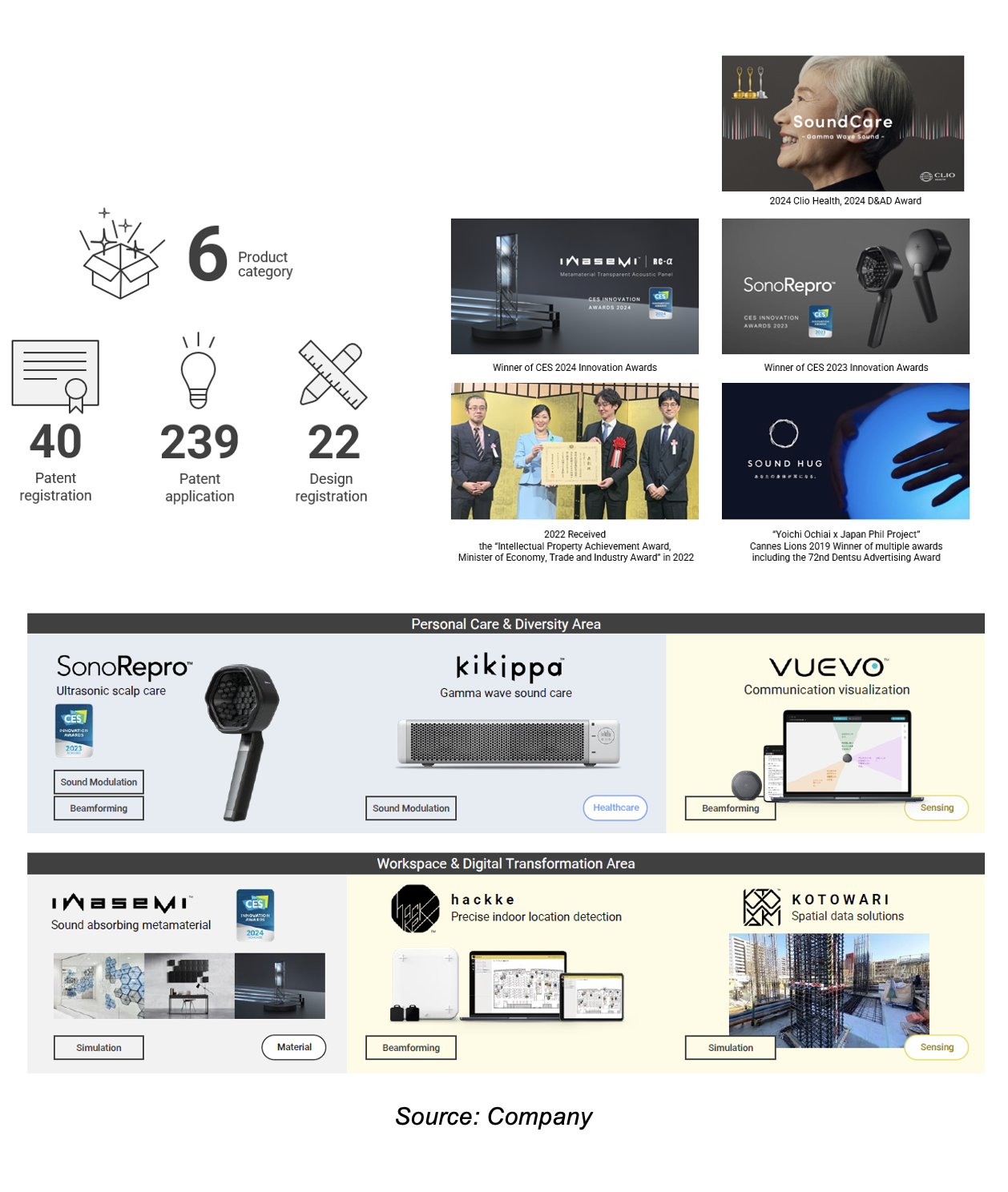
Follows an asset-light business model by relying on third-party manufacturers. Commercializing applications through partnerships with industry players, and research entities
Three commercialized personal care products, all currently marketed in Japan. Three commercialized products for businesses, all available in Japan, with one also marketed in the U.S.
The following section summarizes Pixie’s flagship products.
These three products accounted for 65% of FY2024 revenue (57% in FY2023). Compared to typical startups, we believe Pixie's strategic partnerships with established players enhance its success potential by leveraging their expertise, resources, and distribution channels
SonoRepro is marketed as a scalp care device, while kikippa is marketed for its ability to stimulate a user’s auditory experience
SonoRepro (Launched in 2022)
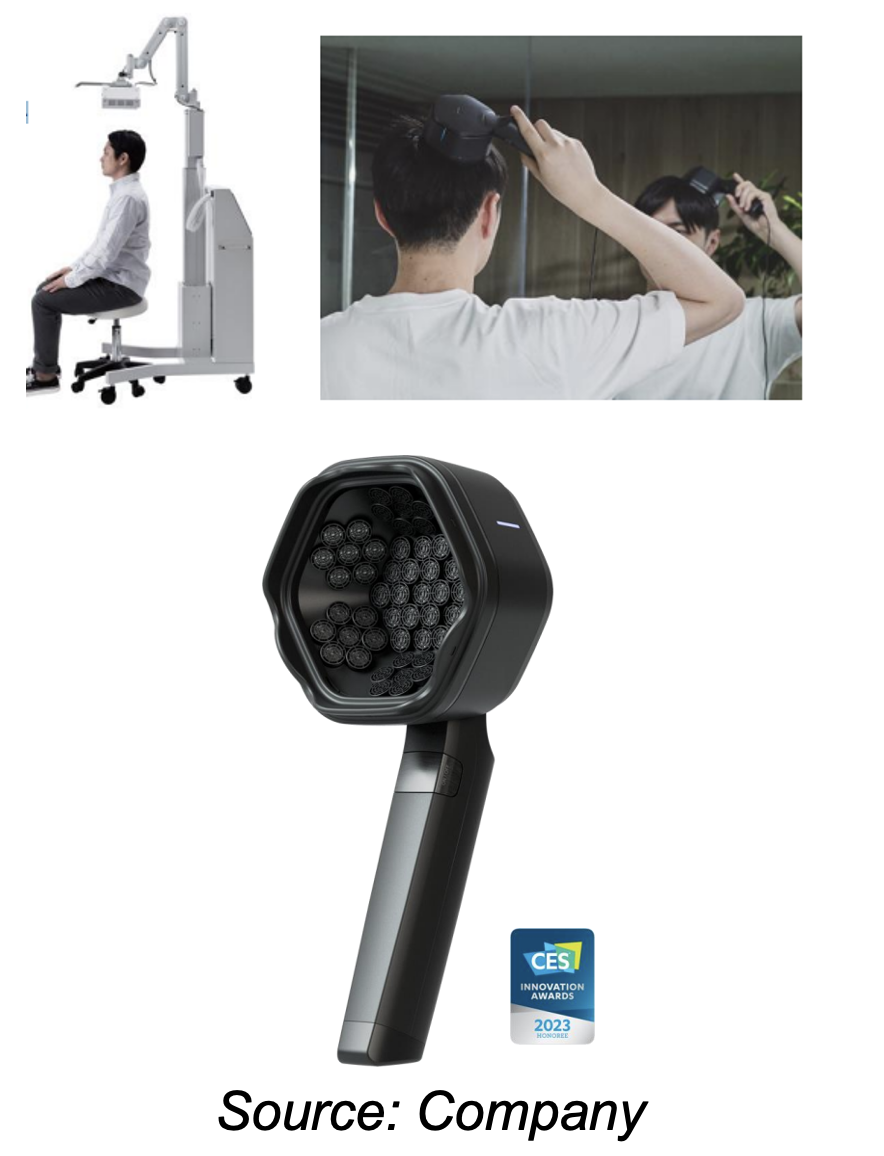
Pixies has a non-exclusive distribution agreement with Angfa, a Japanese preventive medicine company; financial terms undisclosed
A non-contact scalp care device utilizing ultrasonic waves to stimulate the scalp, promoting hair growth and overall hair health; Intended for daily use, with each section requiring one minute of treatment.
Tests conducted by Pixie and its partner revealed significant improvements in hair diameter, scalp condition, and scalp water content.
Number of devices sold to date – 3,000+
Distribution - 95+ retail and online stores/salons in Japan, including major consumer electronics retail chains, and Amazon Japan (NASDAQ: AMZN)
Product Reviews - <10 reviews on Amazon, and other online stores
Device Price - 125,000 yen (US$815)
Estimated product life – three years
Competition – Directly competes with hair scalp massagers offered by large brands; SonoRepro's advantages lie in its ability to stimulate the scalp without direct contact, ensuring cleanliness, and scalp protection. The price range of comparable devices is 85,000 (US$
kikippa (Launched in 2023)
Developed in collaboration with Shionogi Healthcare (TSE: 4507/MCAP: US$13B), a Japanese pharmaceutical company; financial terms undisclosed
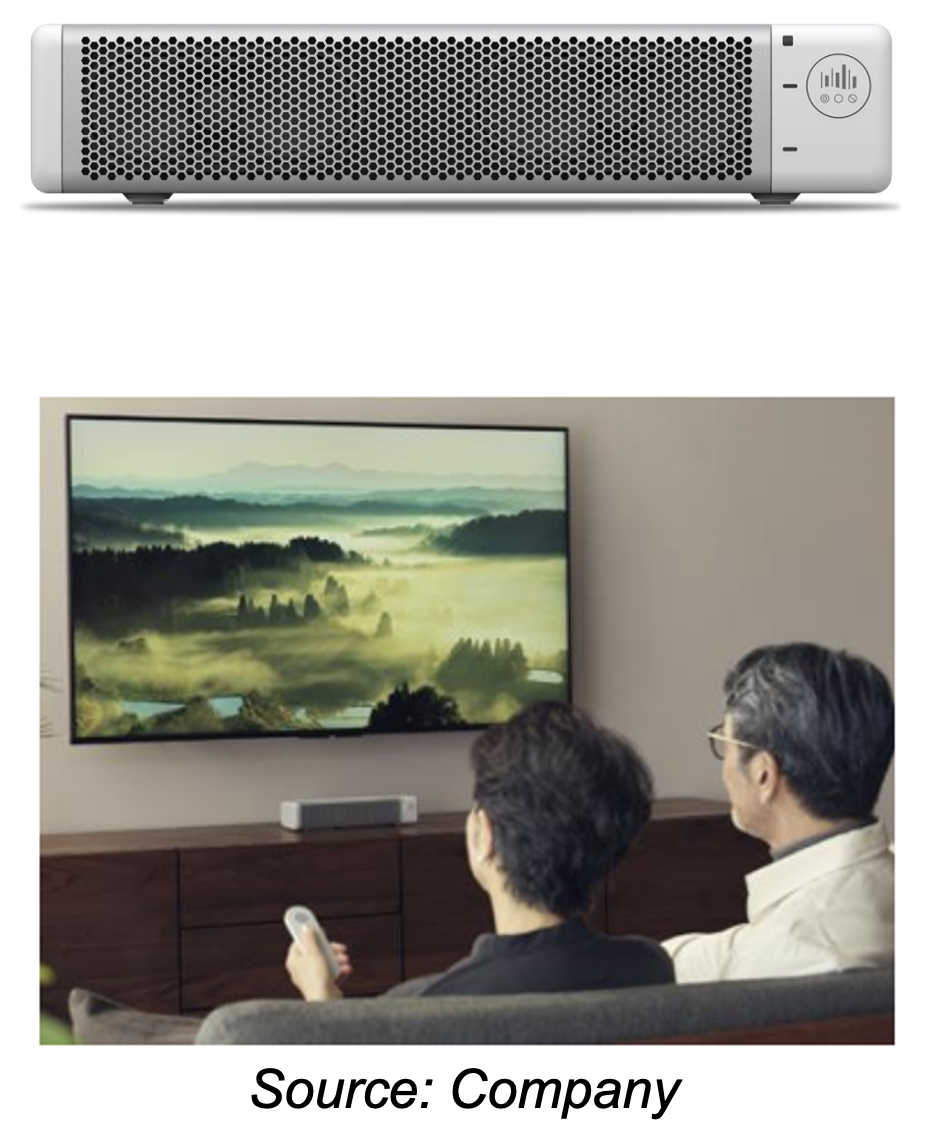
An acoustic stimulation device/speaker primarily designed for seniors to enhance cognitive abilities and prevent dementia. This device uses a proprietary algorithm to transform everyday sounds (like those from TVs or computers) into frequencies associated with gamma brainwaves. Gamma waves are the fastest signals produced by the brain. Third-party studies indicate a link between gamma waves and improved cognitive functions. kikippa connects directly to audio devices.
Number of devices sold to date – undisclosed
Distribution - Sold on partner Shionogi Healthcare's online platform, consumer electronics stores, and other online stores
Product Reviews - <10 reviews on Amazon, and other online stores
Device Price - 90,000 yen (US$590)
Estimated product life – five years
Competition – We are not aware of any direct competitors. However, the device competes with medical products/solutions designed for dementia prevention.
VUEVO (Launched in 2023)
A tabletop microphone transcription service designed for the deaf and hard of hearing (DDH); it displays the direction and content of a speaker's voice in real-time. Compatible with computers and tablets, it enhances conversations in group settings like meetings or lectures. Pixie is currently developing smart glasses equipped with same technology.
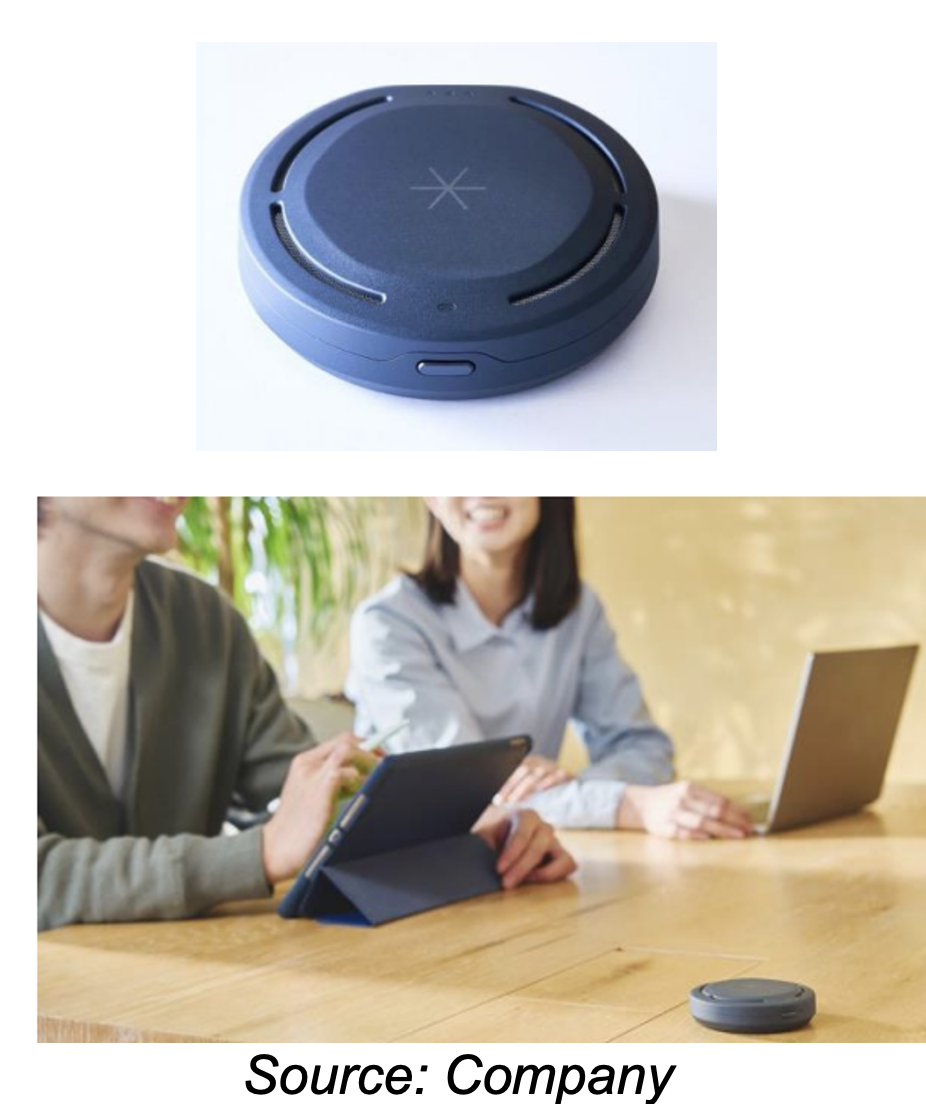
In August 2024, the company launched the VUEVO Display, a transparent screen that shows real-time dialogue subtitles on both sides. It also features an interpretation function, aiding communication for both DHH individuals and those speaking different languages.
Number of devices sold to date – in early stages of commercialization
Distribution – Direct sales to businesses
Product Reviews – N/A
Device Price – VUEVO mic: 145,000 yen (US$945), and monthly usage fees of 30,000 yen (US$195) for connectivity
Estimated product life – five years
Competition - Pixie competes with hearing aids and speech-to-text apps. Its advantages include distinguishing speakers in meetings, and value-added features such as summarized minutes.
Financials (Year-End: Apr 30th)
FY2024 revenue was up 41% YoY, beating our estimate by 10%. Product sales were up 186% YoY, fueled by product launches in FY2023
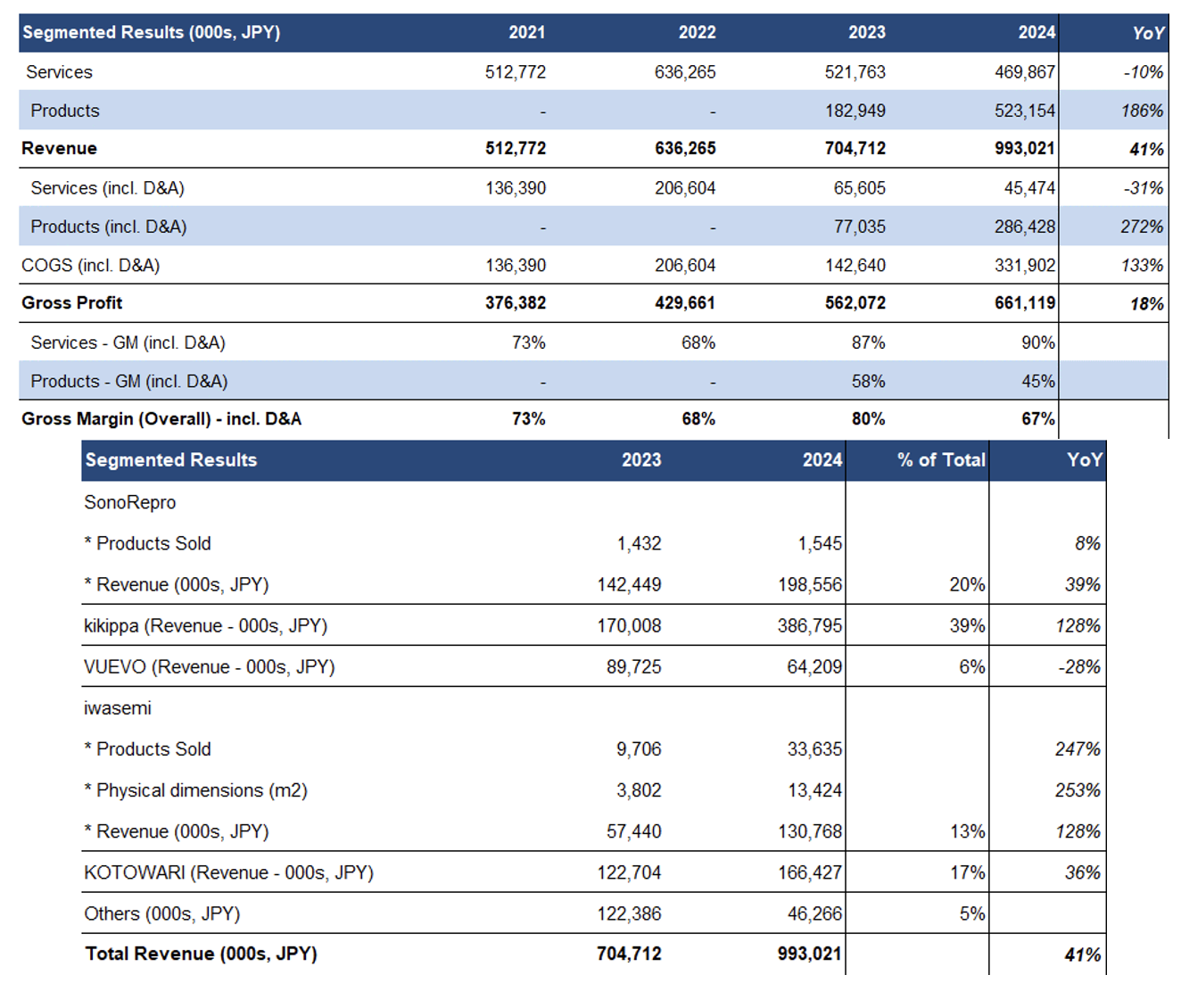
Services revenue come from providing R&D services to partners; however, this revenue stream will likely diminish moving forward. EBITDA and EPS remained negative, and worsened slightly due to a 20% increase in G&A expenses, driven by higher marketing expenses
2024 EPS was 7% higher than expected

The company does not disclose its marketing expenses; In FY2024, G&A expenses (including marketing) were 217% of revenue, down from 254% in FY2023. With rising revenue, we believe this ratio will decrease to 156% in FY2025, and continue to trend lower
Established companies in the Healthcare Equipment/Services sector typically allocate 5%-10% of revenue to marketing expenses. FCF decreased due to higher G&A expenses. Healthy balance sheet

As FY2024 G&A expenses were higher than expected, we are lowering our 2025 EPS estimate. As a result, our DCF valuation decreased from US$6.19 to US$5.70/share
FRC Projections and Valuation
We are not making any material changes to our revenue forecasts, with our models predicting that Pixie’s two flagship products will capture 1% of their target markets in Japan by 2030, without considering any international expansion

For conservatism, we are not assigning any upside from the company’s other products
Pixie is trading at 0.9x forward revenue (previously 1.4x) vs the sector average of 2.4x (previously 2.8x), implying a 64% discount
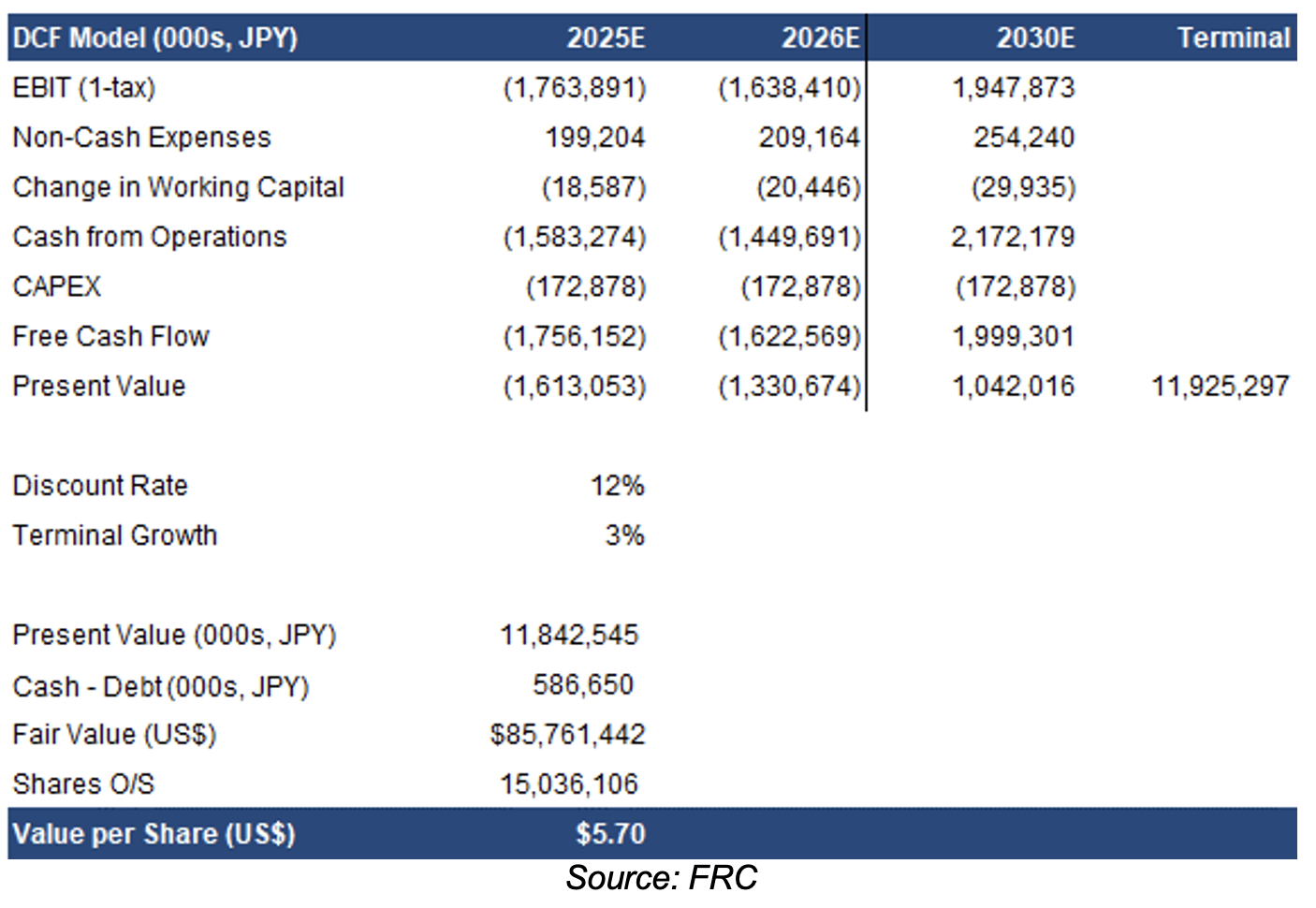
Applying 2.4x to our revenue forecast for Pixie, we arrived at a comparables valuation of US$3.19/share (previously US$4.23/share)
Comparables Valuation
Our valuation is highly sensitive to our market share assumptions
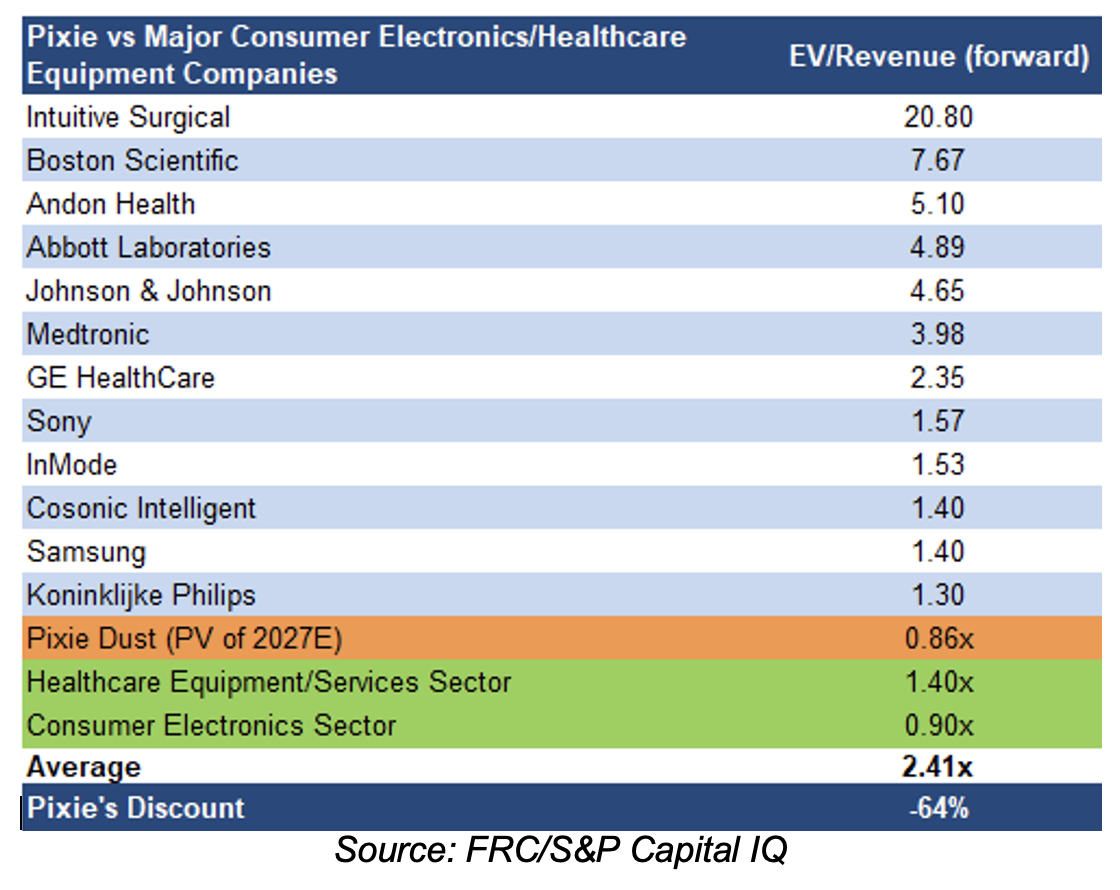
We are reiterating our BUY rating, and adjusting our fair value estimate from US$5.21 to US$4.45/share (the average of our DCF and comparables valuations). Our valuation hinges heavily on the success of Pixie’s two flagship products. While Pixie's technology is a recent innovation, we believe that product distribution by major Japanese retail chains and electronic stores, coupled with strong sales growth, suggests promising market acceptance.
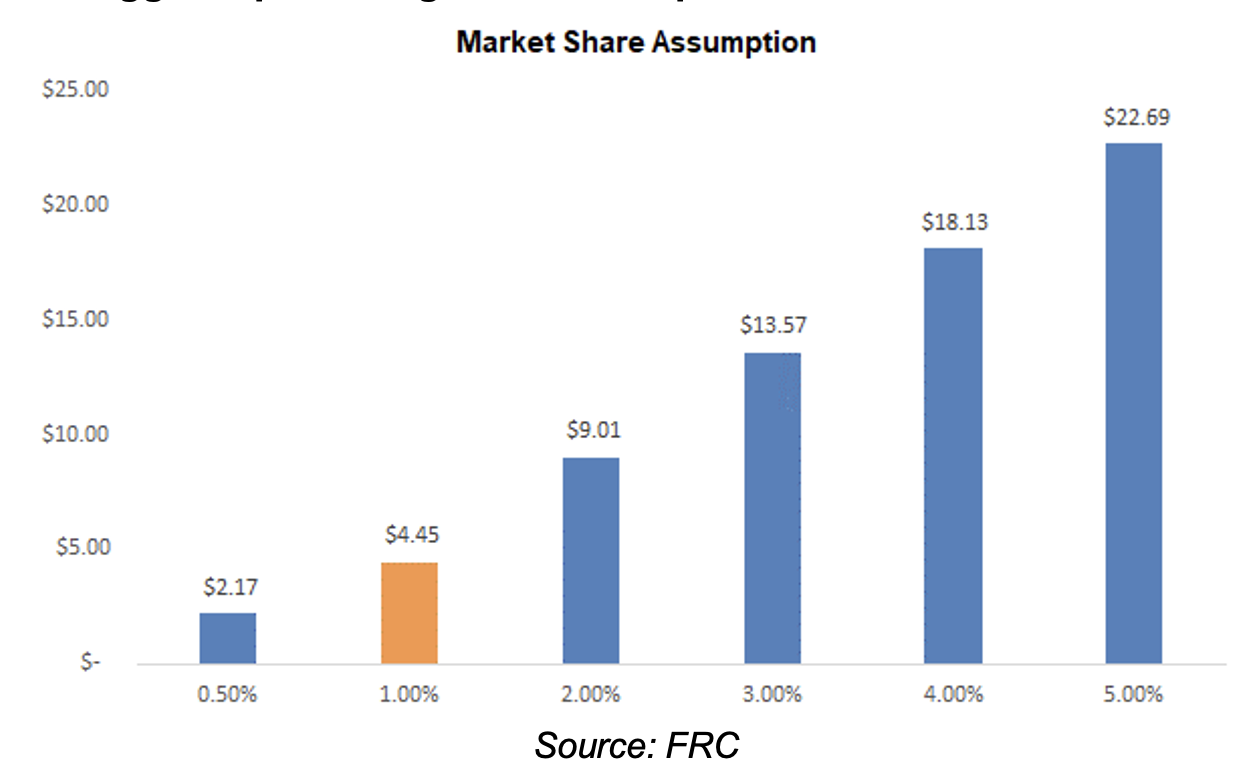
Risks
We believe the company is exposed to the following key risks (not exhaustive):
We are maintaining our risk rating of 4 (Speculative)
- Limited operational history
- EBITDA has not yet turned positive
- Competition
- Need to pursue equity financings to fund working capital, and R&D, until EBITDA turns positive
- No guarantee that the company will be able to expand its products internationally
